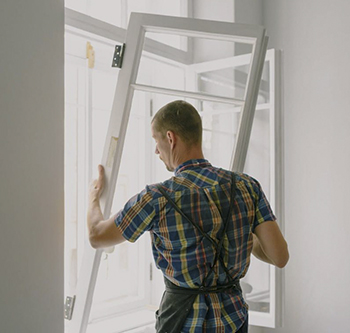Solar energy control
Contents |
[edit] Introduction
The interaction of light with a glass surface is a complex area of study. Advanced building physics modelling systems can simulate the effect of solar radiation and energy flows on internal environments, examining variables such as solar angle (dependent on geographic location and time of year), glazing type, shading system, and the aspect and construction of a specific building.
[edit] Thermal gain
The g-value, or total solar energy transmittance, is the percentage of solar energy that reaches the interior of a building. It is calculated from a number of factors, including direct transmittance, reflectance, and absorptance.
External fabric shading can achieve a g-value as low as 0.02 for all types of glazing. This means that fabric shading can deliver the required environmental benefits while also reducing the overall project cost, as savings can be made on the glazing specification.
[edit] Energy savings and CO2 emissions
Dynamic fabric shading can mean significant energy savings because it removes the need for artificial cooling, lighting and heating. For south facing facades this reduction can even be as much as 65%.
The biggest single area of savings is air conditioning, where external blinds can help achieve energy savings of more than 70% (source: ES-SO). Savings are also significant for lighting costs, especially where building management systems synchronise shading and lighting use.
Whereas louvres, film or ‘solar control’ glazing cast a permanent shadow, automated fabric shades offer more versatile control and allow occupants to enjoy natural light, even in duller conditions. The use of highly-insulating fabrics can even reduce heating costs in colder weather, especially when closed overnight.
If environmental credentials are important to the design brief, fabric shading can help make a difference. The appropriate automated fabric shade will deliver energy savings of up to 60 times its CO2 footprint over a 20-year lifespan. Approximately 86% of relevant emissions come from the extraction of raw materials and the production of primary products. Only 0.5% is created during manufacturing. This makes fabric shading a popular choice for any designer thinking about environmental impact.
By --Guthrie Douglas Group Limited
[edit] Related articles on Designing Buildings Wiki
Featured articles and news
Mixed reactions to apprenticeship and skills reform 2025
A 'welcome shift' for some and a 'backwards step' for others.
Licensing construction in the UK
As the latest report and proposal to licence builders reaches Parliament.
Building Safety Alliance golden thread guidance
Extensive excel checklist of information with guidance document freely accessible.
Fair Payment Code and other payment initiatives
For fair and late payments, need to work together to add value.
Pre-planning delivery programmes and delay penalties
Proposed for housebuilders in government reform: Speeding Up Build Out.
High street health: converting a building for healthcare uses
The benefits of health centres acting as new anchor sites in the high street.
The Remarkable Pinwill Sisters: from ‘lady woodcarvers’ to professionals. Book review.
Skills gap and investment returns on apprenticeships
ECA welcomes new reports from JTL Training and The Electrotechnical Skills Partnership.
Committee report criticises UK retrofit schemes
CIOB responds to UK’s Energy Security and Net Zero Committee report.
Design and construction industry podcasts
Professional development, practice, the pandemic, platforms and podcasts. Have we missed anything?
C20 Society; Buildings at Risk List 2025
10 more buildings published with updates on the past decade of buildings featured.
Boiler Upgrade Scheme and certifications consultation
Summary of government consultation, closing 11 June 2025.
Deputy editor of AT, Tim Fraser, discusses the newly formed society with its current chair, Chris Halligan MCIAT.
Barratt Lo-E passivhaus standard homes planned enmasse
With an initial 728 Lo-E homes across two sites and many more planned for the future.
Government urged to uphold Warm Homes commitment
ECA and industry bodies write to Government concerning its 13.2 billion Warm Homes manifesto commitment.
From project managers to rising stars, sustainability pioneers and more.
Places of Worship in Britain and Ireland, 1929-1990. Book review.
























